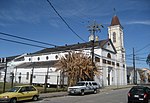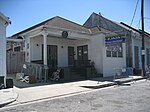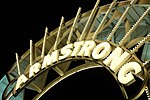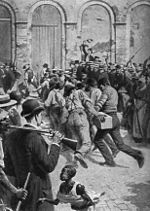New Orleans African American Museum
African-American history in New OrleansAfrican-American museums in LouisianaArt museums and galleries in LouisianaHistoric house museums in LouisianaHistory museums in Louisiana ... and 6 more
Houses in New OrleansLouisiana African American Heritage TrailMuseums in New OrleansMuseums of American artSlave cabins and quarters in the United StatesTremé

The New Orleans African American Museum (NOAAM) is a museum in New Orleans, Louisiana's visiting Tremé neighborhood, the oldest-surviving black community in the United States. The NOAAM of Art, Culture and History seeks to educate and to preserve, interpret, and promote the contributions that people of African descent have made to the development of New Orleans and Louisiana culture, as slaves and as free people of color throughout the history of American slavery as well as during emancipation, Reconstruction, and contemporary times.
Excerpt from the Wikipedia article New Orleans African American Museum (License: CC BY-SA 3.0, Authors, Images).New Orleans African American Museum
Governor Nicholls Street, New Orleans French Quarter
Geographical coordinates (GPS) Address Phone number Website External links Nearby Places Show on map
Geographical coordinates (GPS)
| Latitude | Longitude |
|---|---|
| N 29.966512 ° | E -90.067967 ° |
Address
New Orleans African American Museum
Governor Nicholls Street 1418
70116 New Orleans, French Quarter
Louisiana, United States
Open on Google Maps








